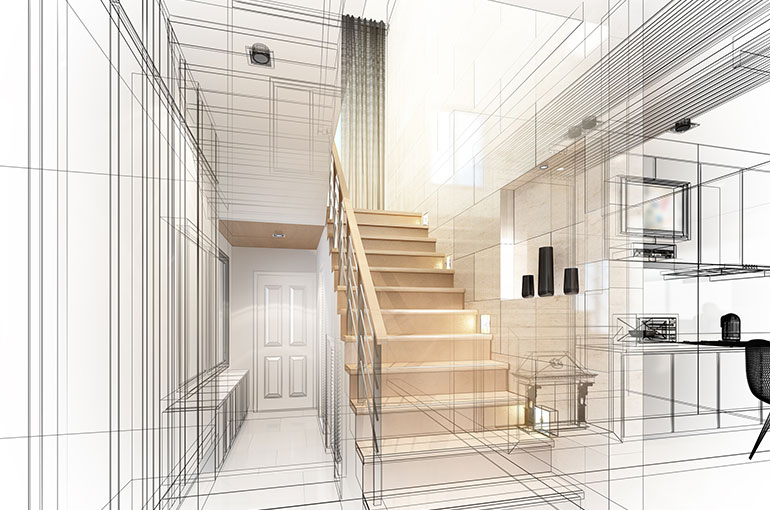Just How CDA Architects Supply Cutting-Edge Solutions for Sustainable Design
Just How CDA Architects Supply Cutting-Edge Solutions for Sustainable Design
Blog Article
A Thorough Introduction of Architectural Designs and Their Influence on Modern City Planning and Advancement
Building designs have actually long offered as a mirror to the social worths and technical developments of their time, playing an important duty in forming contemporary city preparation and growth. From the grandeur of Neoclassicism to the utilitarian approach of Brutalism, each style has actually presented one-of-a-kind concepts that affect city looks and capability.
Historic Summary of Building Designs
Throughout history, architectural designs have actually evolved in reaction to social, technical, and environmental factors. Each duration reflects the prevailing worths, beliefs, and developments of its time, bring about an abundant tapestry of style that indicates human creative thinking and adaptation. The old worlds, such as the Egyptians and Greeks, established foundational styles that highlighted balance and percentage, serving both functional and aesthetic purposes.
As cultures transitioned via the Center Ages, Gothic design arised, characterized by its verticality and elaborate describing, mirroring the spiritual aspirations of the period. The Renaissance noted a revival of classic ideals, merging art and design in ingenious manner ins which affected subsequent styles throughout Europe.
The Industrial Change presented brand-new products and building techniques, motivating activities like Modernism, which tested conventional kinds and welcomed simplicity and performance. The 20th century saw a diversity of designs, with Postmodernism responding against the plain minimalism of its predecessor, integrating historic referrals and diverse elements.
Today, architectural designs proceed to progress, driven by globalization and sustainability worries, showing a vibrant interplay between heritage and development. This historic overview emphasizes the value of architecture as a mirror of societal evolution and as a driver for urban growth.
Trick Architectural Styles Explained
The diversity of architectural styles mirrors the myriad influences that form our constructed atmosphere, each symbolizing unique characteristics and cultural values. Trick architectural designs include Classic, Gothic, Baroque, Modernism, and Postmodernism, each representing unique historical contexts and visual viewpoints.
Classical architecture, rooted in ancient Greece and Rome, emphasizes symmetry, percentage, and using columns. In comparison, Gothic architecture, thriving between Ages, is identified by pointed arches, ribbed vaults, and flying buttresses, producing a heavenly quality in sanctuaries. Baroque architecture, emerging in the 17th century, is noted by splendour, sophisticated decoration, and a dynamic interplay of light and darkness.

Comprehending these styles gives understanding into the social stories and technological developments of their particular periods, highlighting exactly how style serves not simply as a shelter, but as a reflection of societal worths and desires.
Impact on Urban Preparation
In forming the development of cities, architectural styles considerably affect city planning decisions. The choice of architectural style often determines the appearances, capability, and overall personality of metropolitan settings.
In addition, architectural designs can affect zoning laws and land utilize plans. Urban organizers have to consider the prevailing architectural patterns when making districts, making certain that brand-new advancements harmonize with existing frameworks. This consideration promotes cohesive city landscapes and enhances area identity.
The application of details architectural styles can likewise affect socioeconomic elements within a city. As an example, premium modern layouts might draw in wealthy residents and services, resulting in gentrification, while a lot more inexpensive real estate remedies may prioritize you could check here useful and lasting designs to fit diverse populations. Inevitably, the interplay in between building styles and urban planning creates vibrant cities that mirror both historic context and modern demands, shaping the lived experiences of their inhabitants.
Sustainability and Modern Style
Architectural styles play a critical function in attending to contemporary challenges, specifically in the realm of sustainability. As city locations broaden and environmental concerns heighten, contemporary style significantly accepts lasting layout concepts that prioritize power effectiveness, resource preservation, and minimal environmental influence.
Contemporary architectural activities, such as biophilic style and green design, advocate for frameworks that balance with their surroundings, using all-natural materials and promoting biodiversity - cda architects. These styles frequently integrate sustainable energy resources, such as photovoltaic panels and wind turbines, to lower reliance on nonrenewable fuel sources and lower carbon impacts
In addition, the combination of advanced innovations, such as clever structure systems, boosts power administration, enhancing resource use while making sure owner convenience. Ingenious water management techniques, consisting of rain harvesting and greywater recycling, more add to lasting urban settings.
Especially, sustainability expands past ecological issues; it includes social and financial measurements. By cultivating community wellness and advertising inclusivity, modern-day architectural styles line up with sustainable advancement goals. Subsequently, the development of architectural techniques proceeds to form resistant find this cities that not only fulfill the requirements of the present however also protect the future for generations ahead.
Neighborhood Involvement in Layout
Community involvement in style functions as an important bridge in between architects and the populations they offer, making sure that the built environment mirrors the needs and goals of its customers. This joint procedure welcomes community participants to add their insights and choices, fostering a feeling of possession and duty towards the rooms they inhabit.
Reliable neighborhood involvement uses different approaches, such as workshops, studies, and public online forums, to gather diverse point of views (cda architects). These methods facilitate a two-way discussion, allowing engineers to understand neighborhood contexts while empowering locals to voice their worries and wishes. This inclusivity not only enhances the layout top quality yet likewise advertises social equity by resolving the special difficulties encountered by marginalized teams

Final Thought
Building designs have actually profoundly affected modern city preparation and growth, mirroring evolving social and technological contexts. As cities proceed to expand and adapt, the ongoing dialogue between building heritage and modern-day design concepts will stay necessary in creating inclusive, vivid rooms that boost high quality of life and promote social equity.
Report this page